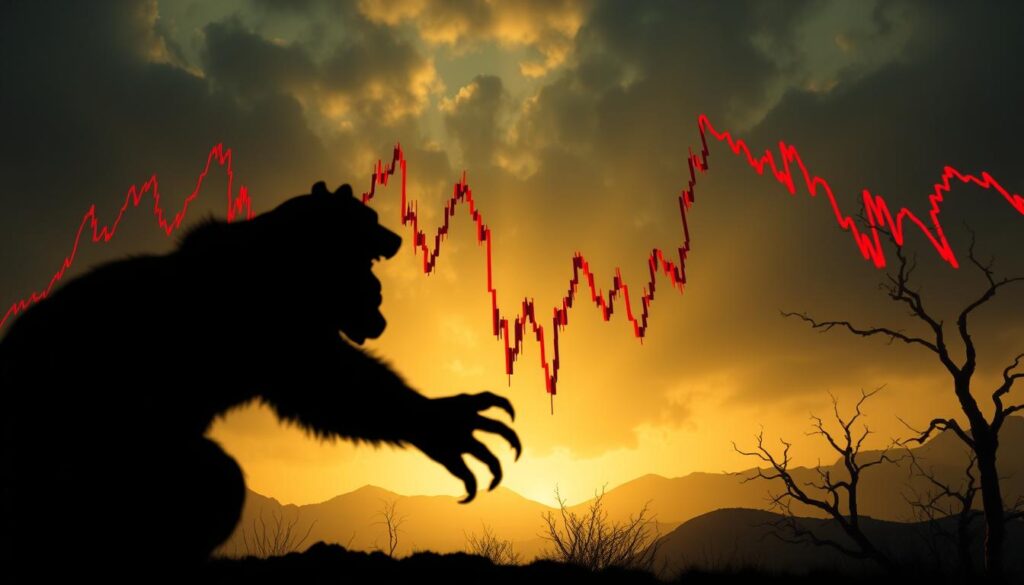Now Reading: Signs of Crypto Market Recovery Bottom Formation Explained
- 01
Signs of Crypto Market Recovery Bottom Formation Explained
Signs of Crypto Market Recovery Bottom Formation Explained

Understanding when digital asset prices reach their lowest point is crucial for investors. Recognizing these critical phases helps people make smarter decisions in the current cryptocurrency landscape.
Bitcoin currently trades between $108,000 and $109,000 with relatively calm price movement. This stability often suggests that selling pressure may be exhausting itself. The Spent Output Profit Ratio for short-term holders has dropped to 0.982, indicating significant capitulation.
Hedera Hashgraph (HBAR) maintains stability at $0.17 with a market capitalization of $7.22 billion. This altcoin shows similar patterns to Bitcoin, potentially approaching another critical low point after sharp peaks and deep retracements since 2020.
Financial experts use various metrics to identify these turning points. Technical indicators and on-chain data often flash signals consistent with historical bottom developments. Understanding these signs helps differentiate between temporary price stabilization and genuine market structure shifts.
The digital currency space operates in cycles where extreme volatility often creates conditions for the next growth phase. Recognizing these patterns can provide valuable insights for strategic investment decisions as the landscape continues to evolve in 2025.
Understanding Crypto Market Recovery Bottom Formation
Recognizing when selling exhaustion gives way to accumulation patterns can signal important turning points. This transition phase often marks the beginning of new growth cycles.
Defining the Market Bottom in Crypto Trading
A market bottom occurs when an asset’s price stops falling and begins to stabilize. This represents the end of significant downtrends. The psychology behind these formations involves maximum pessimism and widespread capitulation.
Many participants exit during heavy liquidations at discounted prices. The process unfolds through distinct phases. First comes sharp capitulation and panic selling. Then stabilization emerges as selling pressure weakens.
Finally, gradual accumulation by informed participants begins. Some bottoms form rapid V-shaped recoveries. Others develop more gradual U-shaped patterns requiring extended sideways movement.
Indicators of Accumulation and Reduced Selling Pressure
Reduced selling pressure manifests through specific behaviors. Decreased exchange inflows and increased cold storage movements are key signals. Stabilization of realized capitalization metrics also indicates change.
Informed participants begin positioning during these formations. Long-term holders typically increase their accumulation. Short-term speculators often exit during this phase.
Sentiment indicators like the Fear & Greed Index show extreme fear readings. This signals that weak hands have largely exited. The result is a more stable foundation for future growth.
Identifying genuine accumulation requires monitoring multiple data points. Exchange outflows, dormancy metrics, and holder composition changes provide crucial clues. These indicators help distinguish temporary stabilization from true structural shifts.
Technical Indicators and Price Action in Crypto Markets
Price action analysis combined with technical metrics helps traders spot accumulation phases. These tools provide objective data points for assessing market conditions.

Insights from Hedera Hashgraph and Bitcoin Analysis
Hedera Hashgraph’s chart shows significant volatility. The asset dropped from $0.305 to $0.0725 before recovering to $0.169.
Technical indicators reveal interesting patterns. BBPower reads negative at -0.019, indicating bearish pressure. Meanwhile, Chaikin Money Flow shows positive 0.05, suggesting buying interest remains.
This combination signals accumulation under pressure. Patient investors begin positioning before confirmed reversal. Bitcoin’s current SOPR pattern resembles the April 17 market low.
Key Support Zones and Resistance Levels
Bitcoin maintains critical support around $107,000-$108,000. This level represents substantial supply concentration.
Key resistance levels provide important benchmarks. Reclaiming $110,000 would show initial strength. Breaking $113,500 represents the most significant barrier.
$117,500 could confirm renewed market strength. These price points help traders identify potential trend changes during volatile trading periods.
Historical Patterns and Recent Data Analysis
Examining past cycles provides valuable insights into current digital asset behavior. Historical data reveals consistent patterns that help identify potential turning points.

Repetitive Boom-and-Bust Cycles in Early-Stage Projects
Assets like Hedera Hashgraph demonstrate extreme volatility patterns. Analysts observed a 3,170% rally from 2020’s low point followed by severe corrections.
These cycles show 78%, 93%, and 77% retracements in subsequent periods. The pattern reflects characteristic speculative behavior in emerging digital projects.
Lessons from Bitcoin’s Historical Bottoms
Bitcoin’s 2015 formation occurred after falling to $200 following the Mt. Gox collapse. This period featured deep fear and months of price stabilization.
The 2018-2019 downturn saw prices drop to $3,200 amid ICO bubble bursting. Heavy capitulation and negative sentiment created recovery foundations.
March 2020’s COVID crash brought Bitcoin to $3,800 with massive liquidations. Swift policy interventions enabled one of history’s strongest reversals.
On-Chain Metrics and Sentiment Insights
Valuable signals include declining dormancy metrics and Realized Cap stabilization. These indicate accumulation replacing panic selling.
Exchange outflows show long-term conviction as investors move coins to cold storage. Combining these data points with historical analysis creates a robust framework for identifying genuine turning points.
This approach helps distinguish temporary stabilization from structural shifts when analyzing crypto market trends. The consistent themes across cycles provide reliable guidance for current conditions.
Conclusion
Building effective strategies for digital asset participation involves understanding that timing major shifts is inherently probabilistic. No single method guarantees perfect entry points, making risk management essential even when multiple positive signals emerge. Investors should maintain realistic expectations about cryptocurrency volatility while monitoring relevant news and market interest.
Specific price levels provide crucial confirmation signals. Bitcoin holding above $107,000 support suggests potential stability, while breaking $117,500 could confirm renewed strength. These thresholds help validate or invalidate current theories about market structure changes.
Successful trading requires combining technical chart analysis with multiple converging indicators. Track on-chain metrics for accumulation patterns and monitor sentiment for extreme fear readings. This comprehensive approach helps investors build frameworks that improve identification of major turning points while effectively managing downside risk.














